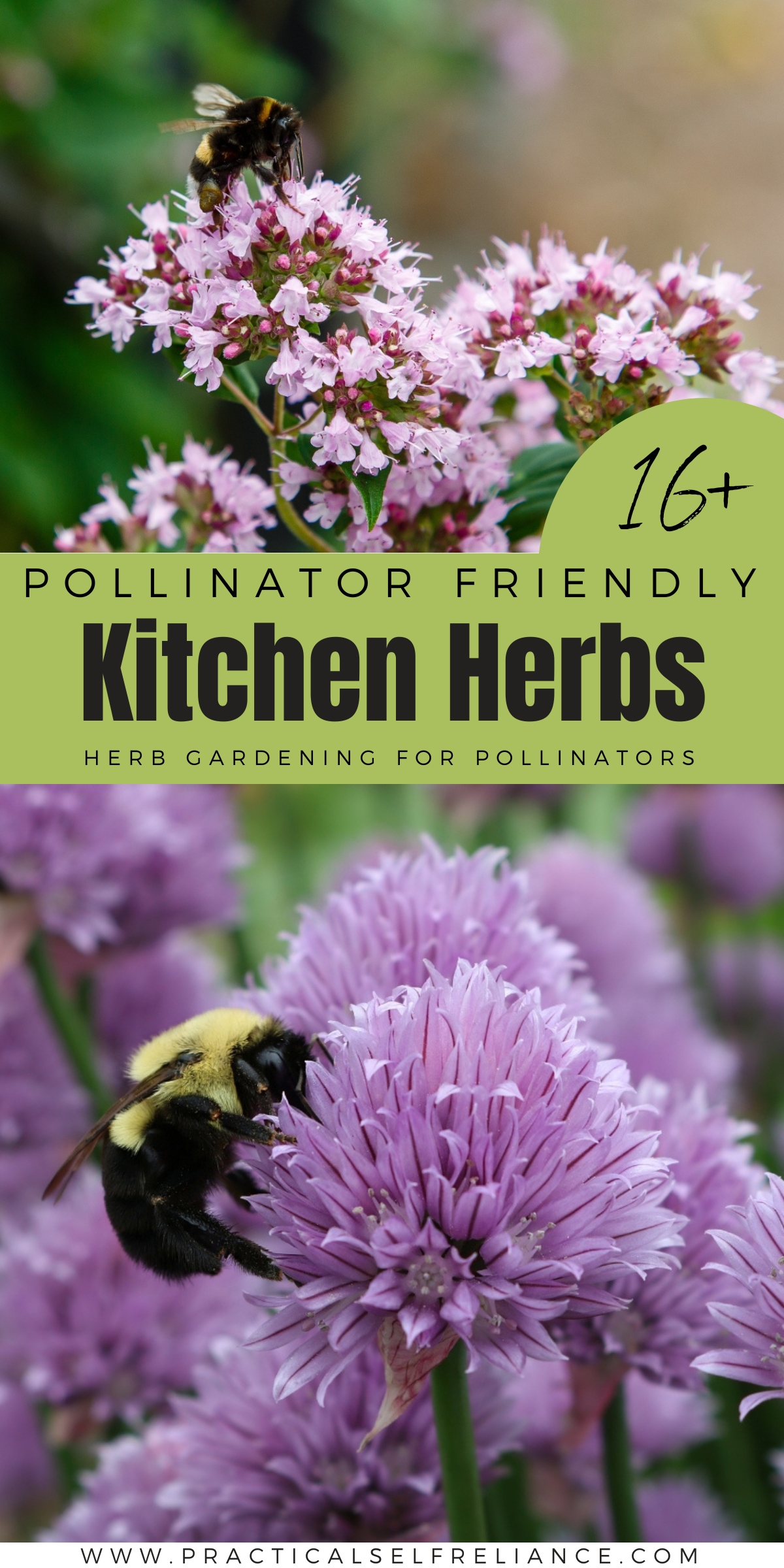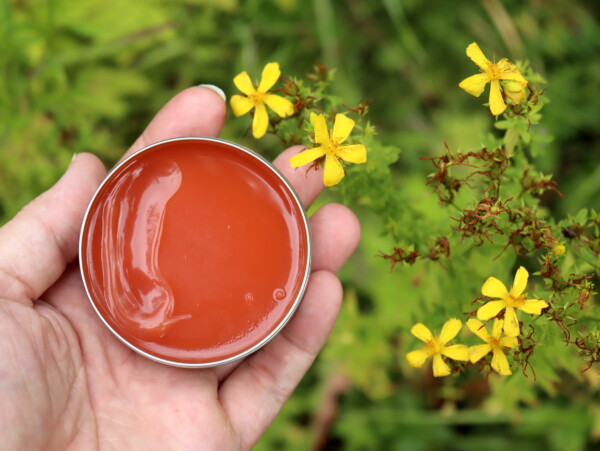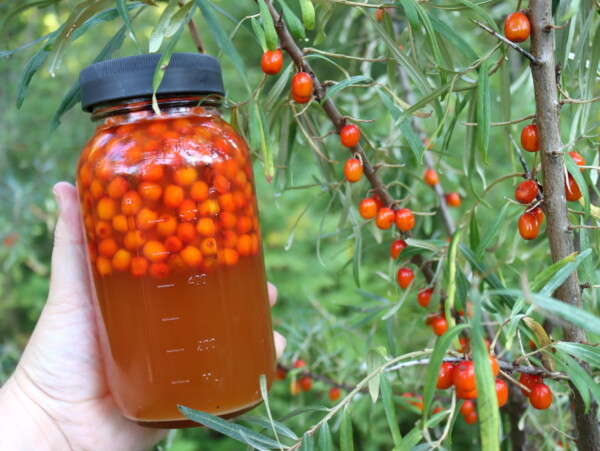Affiliate disclosure: This post may contain affiliate links. Please see our Privacy Policy.
Kitchen herb gardens can feed us and the bees at the same time, and there are many delicious, easy-to-grow culinary herbs that are excellent choices for pollinator-friendly herb gardens.
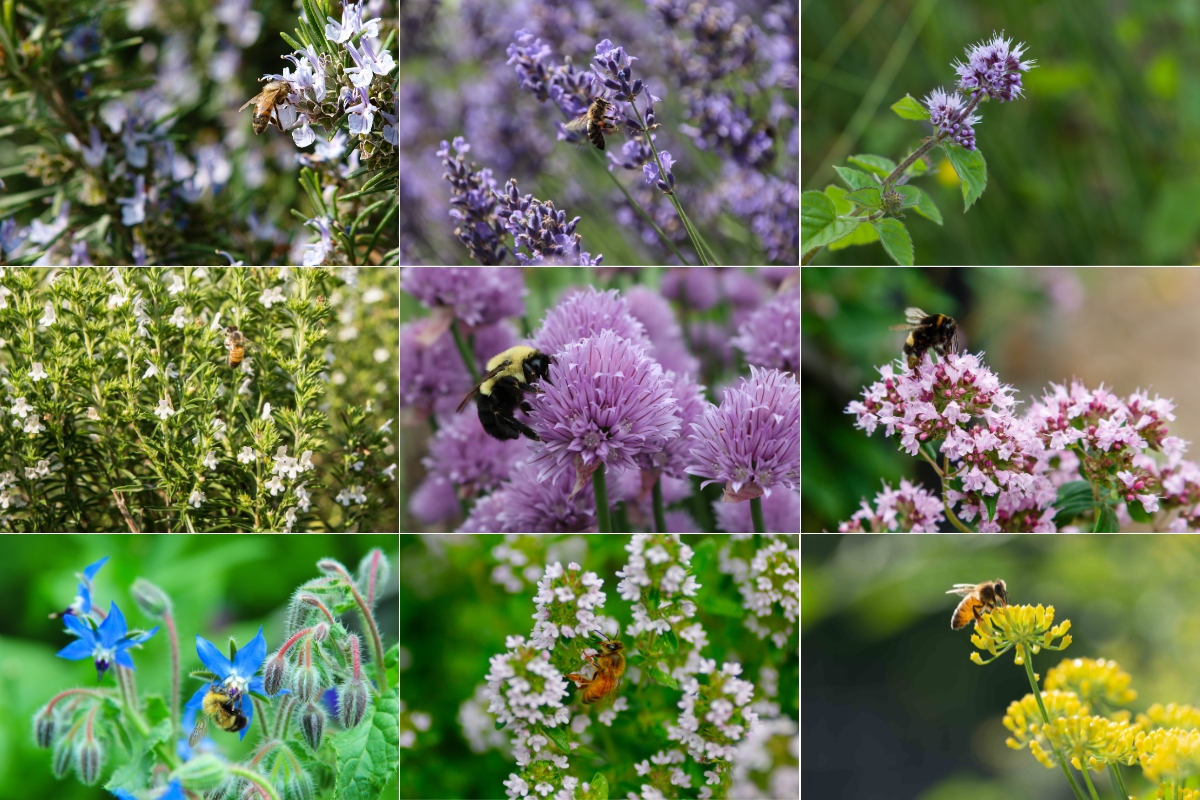
Culinary herb gardens are not only a flavorful addition to your kitchen, but they also play a key role in supporting pollinators, such as bees, butterflies, and hummingbirds. By growing herbs that nourish both you and your garden’s beneficial insects, you can create a beautiful, functional space that serves the environment as well as your culinary needs.
Pollinators are essential to maintaining a healthy ecosystem, as they help fertilize plants, ensuring fruit and seed production. The herbs listed here are especially beneficial to pollinators and can provide them with food and habitat while also offering a variety of uses in the kitchen.
Planting these herbs in your garden helps sustain pollinator populations while enriching your meals. Plus, many culinary herbs also boast additional medicinal properties, such as anti-inflammatory, antimicrobial, or antioxidant benefits, making them a healthy choice for both pollinators and humans.
List of Pollinator-Friendly Culinary Herbs
These easy-to-grow culinary herbs are perfect for attracting pollinators while providing fresh flavors and medicinal benefits for your home-cooked meals.
- Anise (Pimpinella anisum)
- Borage (Borago officinalis)
- Chives (Allium schoenoprasum)
- Cilantro (Coriandrum sativum)
- Dill (Anethum graveolens)
- Fennel (Foeniculum vulgare)
- Lavender (Lavandula spp.)
- Lemon Balm (Melissa officinalis)
- Marjoram (Origanum majorana)
- Mint (Mentha spp.)
- Oregano (Origanum vulgare)
- Rosemary (Rosmarinus officinalis)
- Sage (Salvia officinalis)
- Tarragon (Artemisia dracunculus)
- Thyme (Thymus vulgaris)
- Winter Savory (Satureja montana)
Creating a pollinator-friendly culinary herb garden is an easy and rewarding way to support the environment while benefiting from an abundant harvest of fresh herbs. Let’s explore each herb in detail.
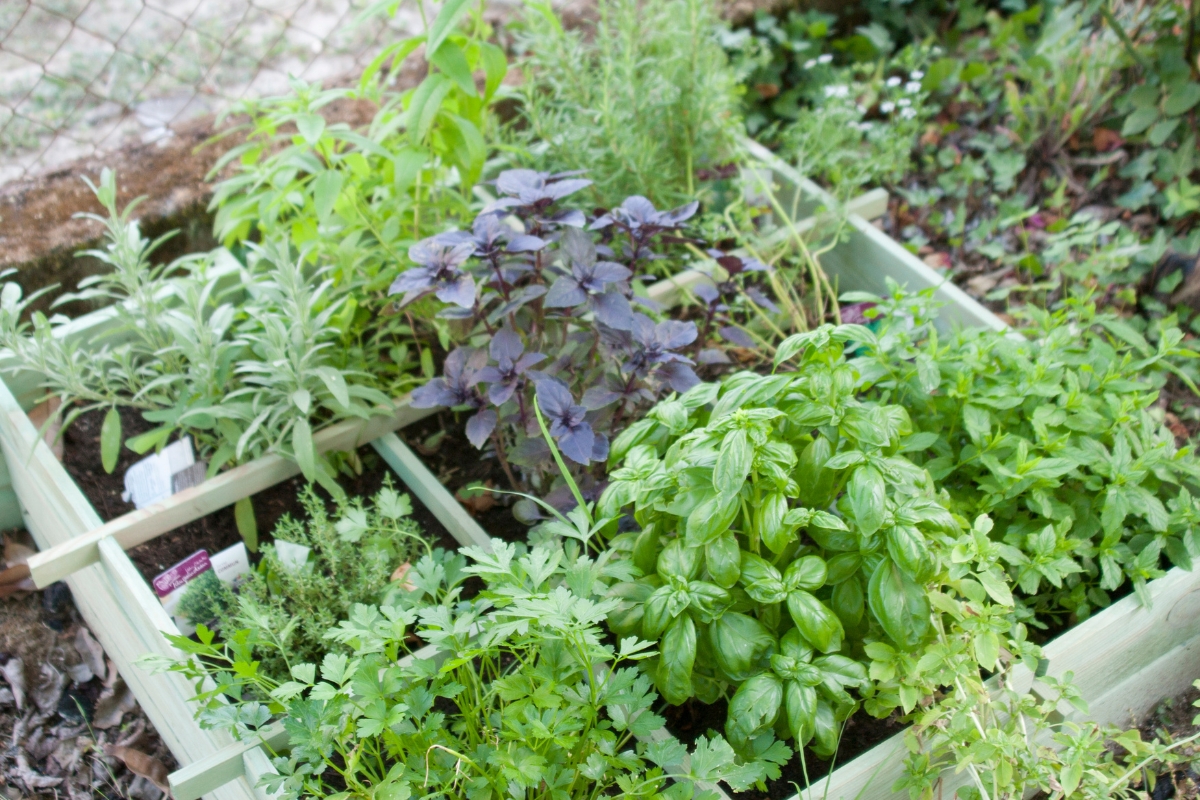
Anise (Pimpinella anisum)
Anise is an annual herb that can grow up to 3 feet tall. It is relatively easy to grow, preferring full sun and well-drained soil. Anise thrives in fertile, slightly sandy soil, and once established, it requires minimal care. The herb produces delicate, umbrella-shaped clusters of white flowers that are highly attractive to bees and butterflies.
In terms of culinary use, the seeds have a sweet, licorice-like flavor that is commonly used in baking, candies, and beverages. Anise can also be used in savory dishes like fish, soups, and sauces.
Medically, Anise has a long history of use for digestive issues, helping to alleviate bloating, indigestion, and nausea. Its mild antimicrobial properties also make it useful for soothing colds and respiratory issues.
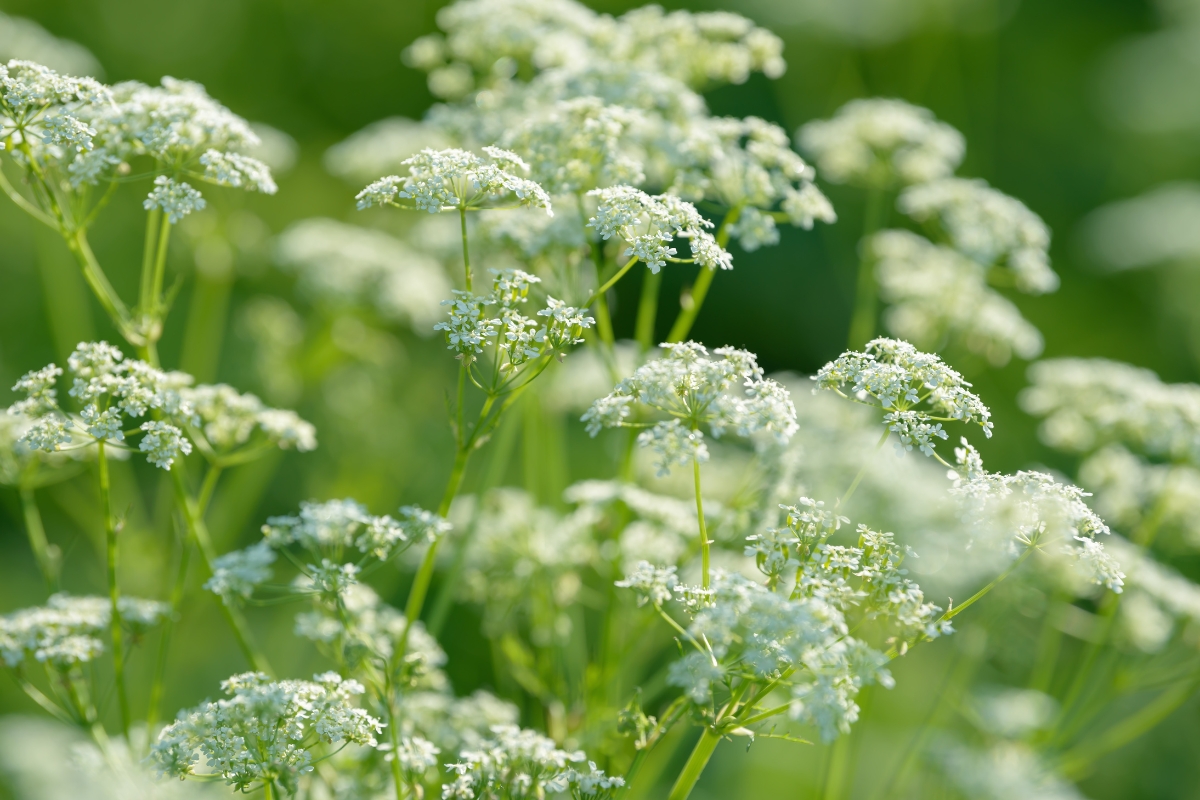
Borage (Borago officinalis)
Borage is an annual herb that grows quickly, reaching heights of 2 to 3 feet. Known for its striking star-shaped blue flowers and fuzzy, cucumber-scented leaves, borage is a magnet for bees and other pollinators. This hardy herb thrives in full sun and well-drained soil but can tolerate a variety of growing conditions, including slightly poor soil.
Borage is relatively low-maintenance and can be grown from seed directly in the garden. Once established, it requires little care and can even self-seed, ensuring a steady supply of this vibrant herb year after year. It spreads readily, so it’s best to plant it in areas where it can be allowed to expand, or in containers if you prefer more control.
Culinarily, borage is prized for its mild cucumber flavor, which can be used to freshen up salads, beverages (like lemonade and cocktails), or garnish cold soups such as gazpacho. The leaves and flowers are both edible, with the flowers adding a splash of color and a subtle cucumber taste. The leaves are often used in savory dishes and can be cooked or used fresh.
Medicinally, borage has been traditionally used to reduce inflammation and support the respiratory system. It contains compounds like gamma-linolenic acid (GLA), which is known for its anti-inflammatory and hormone-balancing properties. Borage is sometimes used to support skin health, particularly in treating conditions like eczema or dry skin, and its soothing properties extend to reducing stress and anxiety.
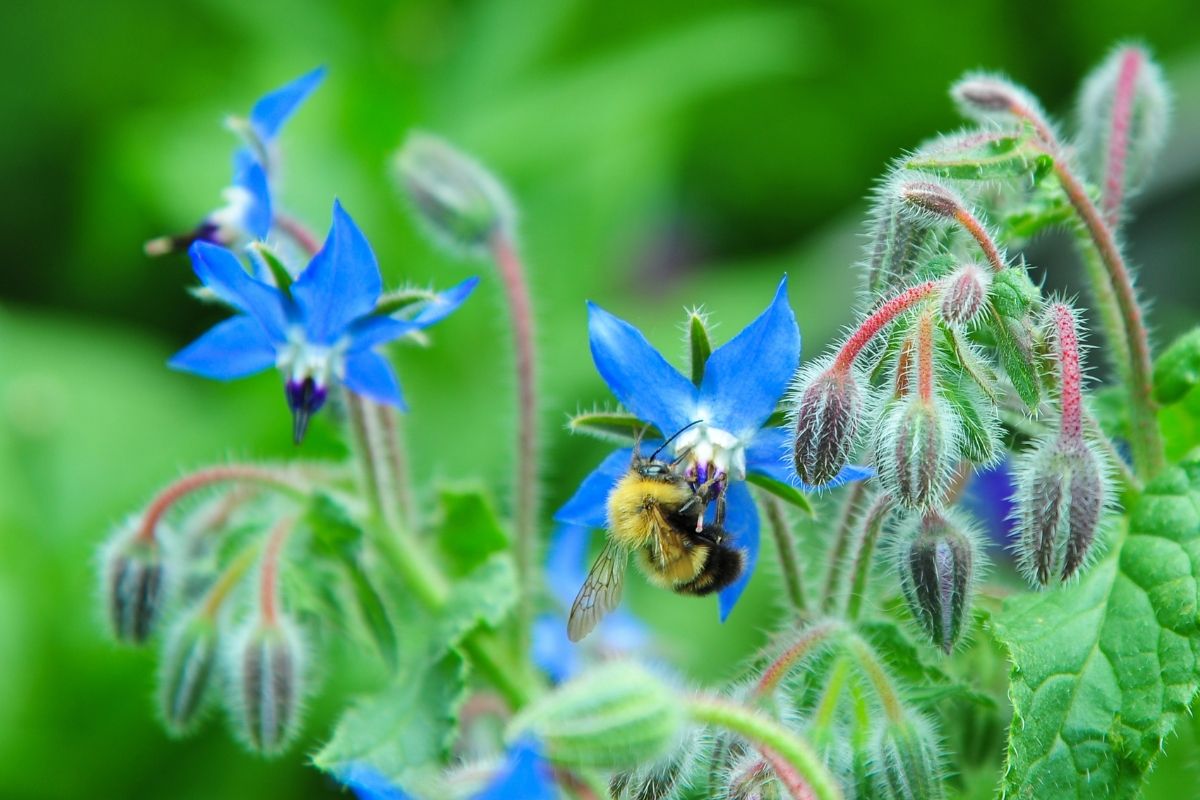
Chives (Allium schoenoprasum)
Chives are a hardy perennial herb that grows up to 12-18 inches tall. They thrive in full sun to partial shade and prefer well-drained soil, making them easy to grow in a variety of garden settings. Chives produce attractive, purple, globe-like flowers that are adored by pollinators, especially bees.
In the kitchen, chives have a mild onion flavor that works wonderfully in salads, soups, and as a garnish for various dishes. Their fresh, bright taste is perfect for topping baked potatoes, eggs, and creamy dips.
Medically, chives contain antioxidants and have mild antibacterial properties. They are also thought to support digestive health and boost the immune system.
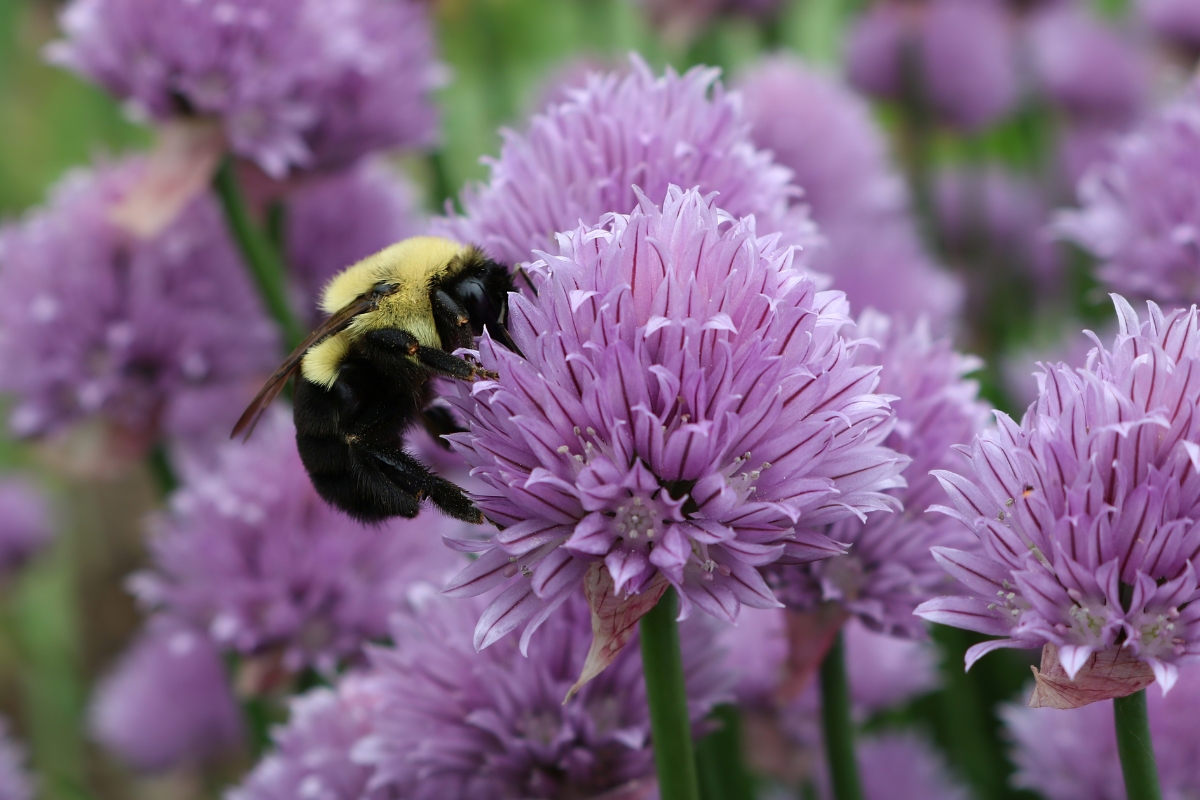
Cilantro (Coriandrum sativum)
Cilantro is an annual herb that grows to about 1 to 2 feet tall, with delicate, fern-like leaves. It prefers full sun and well-drained soil and is quite easy to grow from seed. The small, white or yellow flowers of cilantro are particularly appealing to bees and butterflies, helping attract pollinators to your garden.
Culinarily, cilantro is a staple in many global cuisines, particularly Mexican, Indian, and Southeast Asian. It’s commonly used in salsas, curries, chutneys, salads, and as a garnish for tacos and soups.
Medically, cilantro has digestive benefits, often used to reduce bloating and aid in detoxification. It is also thought to have antimicrobial properties, especially in its seed form, known as coriander.
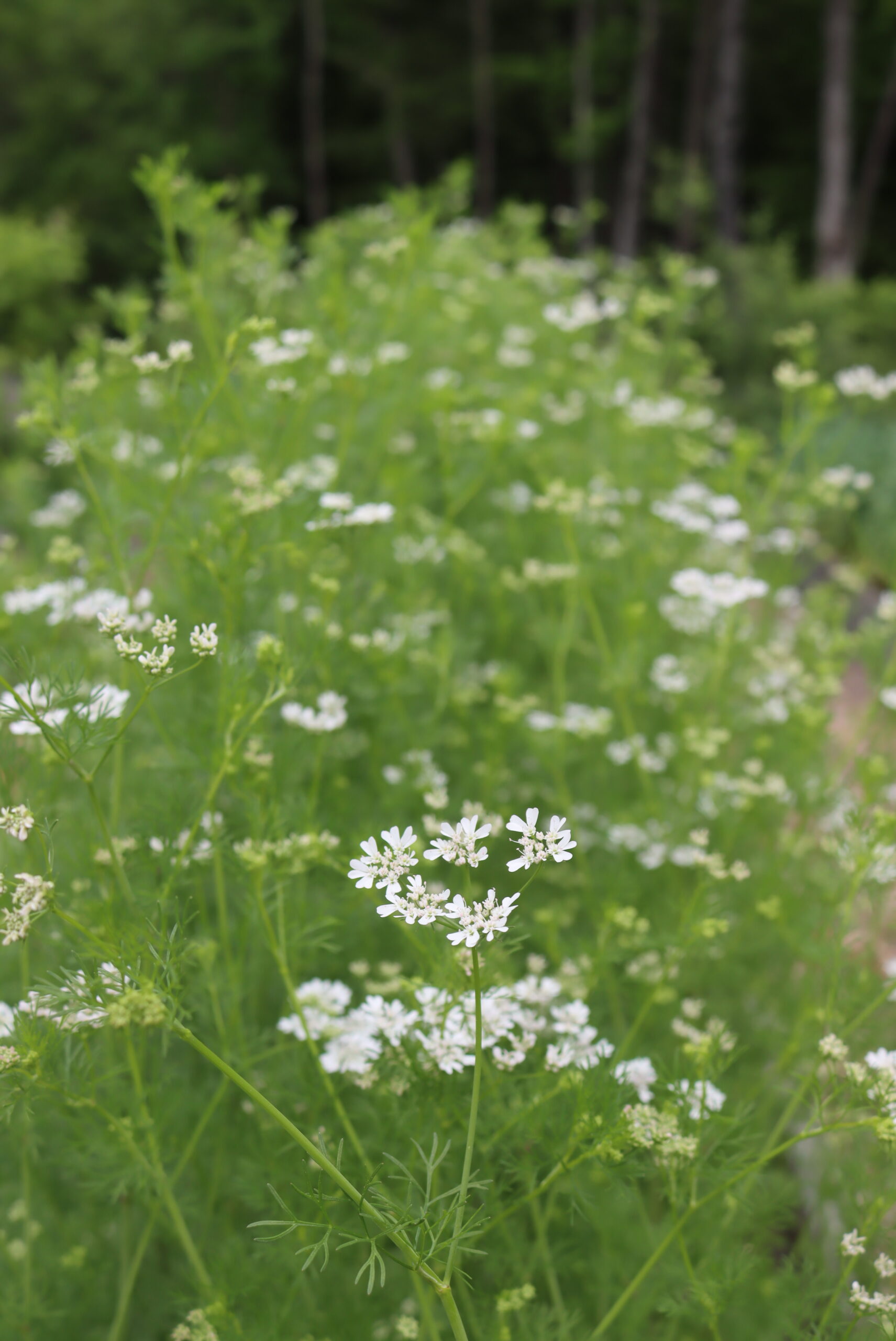
Dill (Anethum graveolens)
Dill is an aromatic annual herb that can grow up to 3 feet tall, with fine, feathery foliage and yellow, umbrella-shaped flowers. It thrives in full sun and well-drained soil, making it a great addition to herb gardens. Dill’s flowers attract a variety of pollinators, including bees, which are drawn to its vibrant yellow blooms.
Dill’s flavorful fronds and seeds are often used in pickling, salads, sauces, and as a seasoning for fish. It adds a refreshing, slightly tangy flavor to a variety of dishes.
Medically, dill is known for its carminative properties, helping to ease indigestion, gas, and bloating. It is also used as a mild sleep aid and to soothe nervous tension.
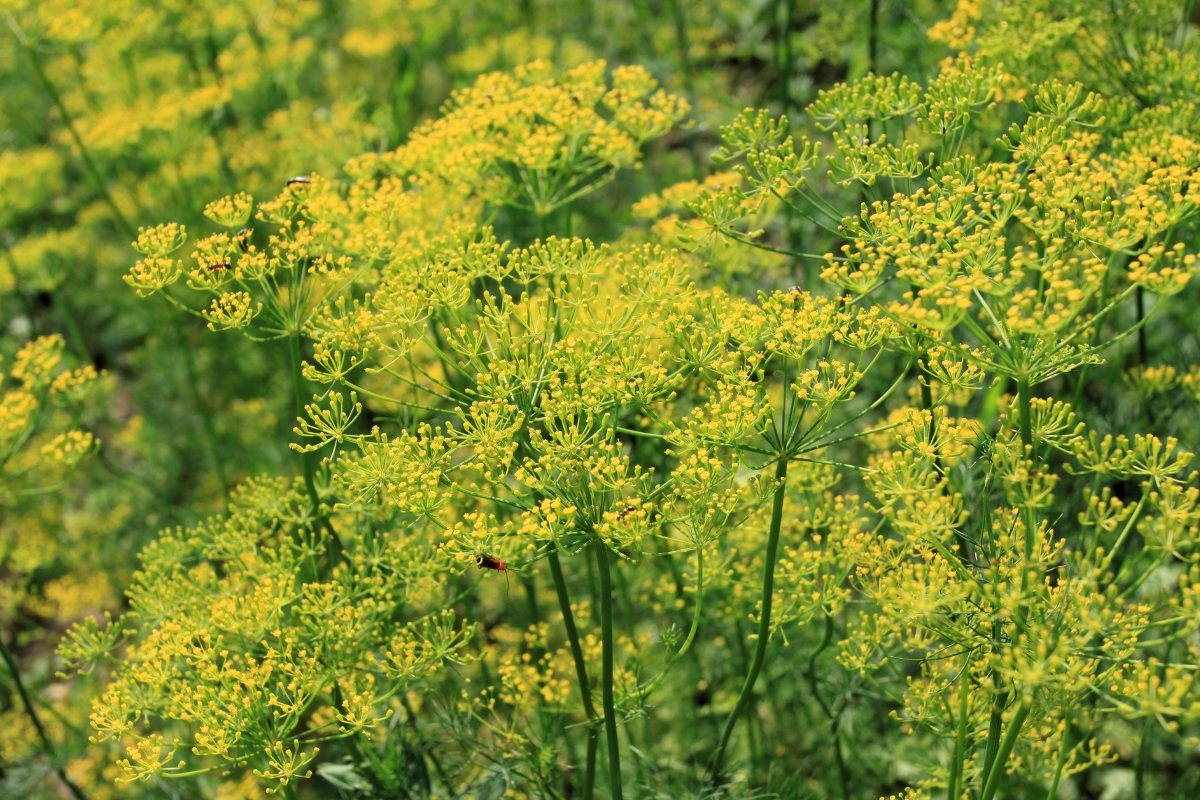
Fennel (Foeniculum vulgare)
Fennel is a perennial herb that can grow up to 5 feet tall, with feathery, fern-like leaves and large, yellow flowers. It grows best in full sun and prefers fertile, well-drained soil. Its large, flat flowers attract bees, butterflies, and other beneficial insects, making it an excellent pollinator-friendly herb for the garden.
Culinarily, fennel is used both for its crunchy, licorice-flavored bulb and its aromatic fronds. It’s commonly added to salads, roasted vegetables, and fish dishes. The seeds are also used in baking and herbal teas.
Medicinally, fennel is often used to alleviate digestive issues like bloating, indigestion, and gas. It also has mild diuretic properties and is known to support menstrual health.
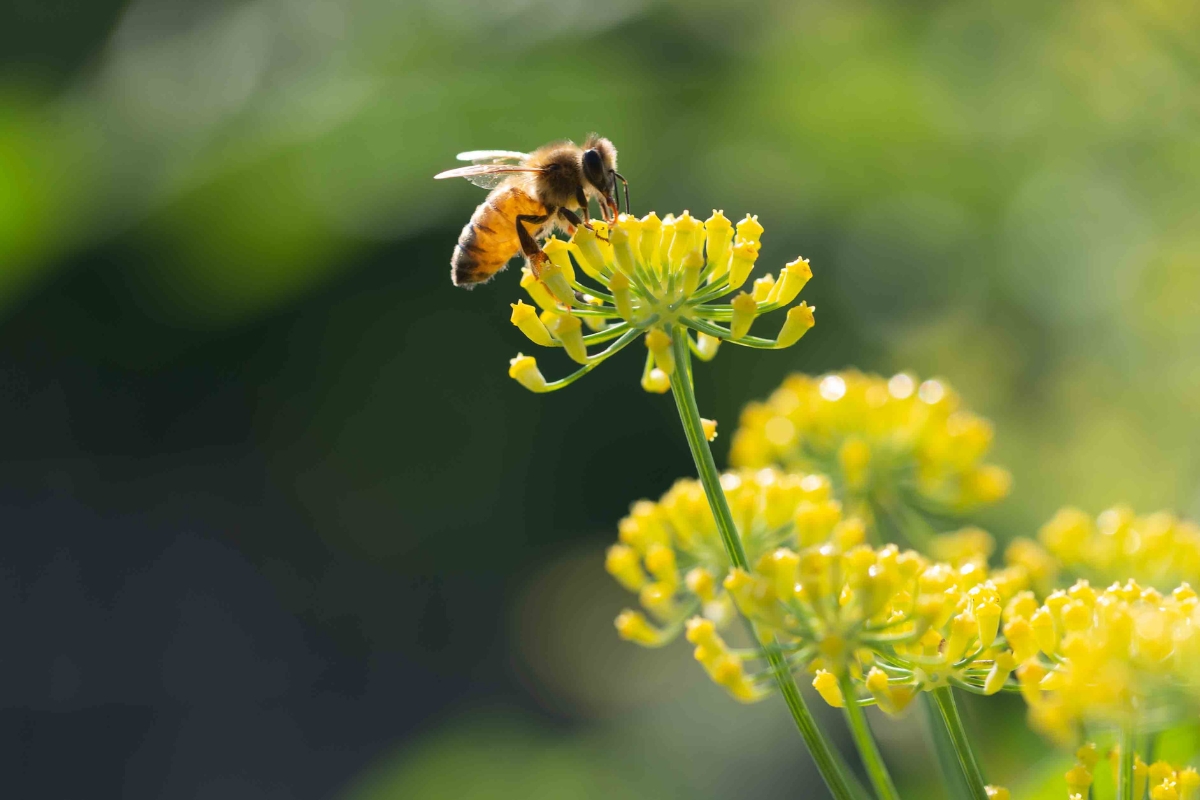
Lavender (Lavandula spp.)
Lavender is a fragrant, woody perennial that can grow up to 2 feet tall, thriving in full sun and well-drained soil. Its tall spikes of purple flowers are beloved by bees, butterflies, and hummingbirds, making it a top choice for pollinator-friendly gardens.
Culinarily, lavender is often used in desserts like cakes, cookies, and ice creams. It can also be used to flavor beverages, including teas, lemonades, and even cocktails.
Medically, lavender is well-known for its calming properties. It is used to reduce stress and anxiety, improve sleep, and alleviate headaches. Lavender oil is also used topically for soothing minor burns and insect bites.
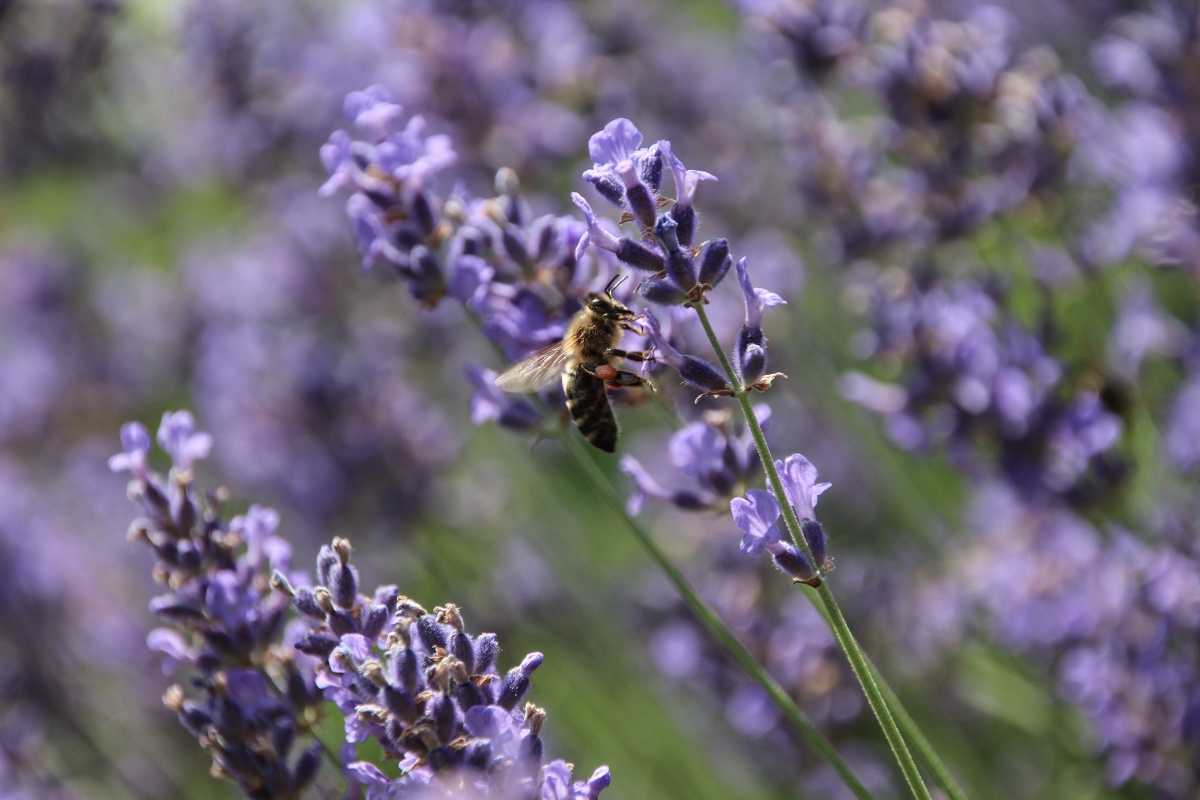
Lemon Balm (Melissa officinalis)
Lemon balm is a perennial herb that grows up to 2 feet tall, with bright green, lemon-scented leaves. It grows best in full sun to partial shade and prefers moist, well-drained soil. Its small white flowers attract bees, especially honeybees.
Culinarily, lemon balm adds a refreshing, citrusy flavor to teas, salads, and desserts. It’s also a great addition to fruit dishes and works well in herb-infused syrups or drinks.
Medically, lemon balm is often used for its calming effects. It can help reduce stress, anxiety, and insomnia. Additionally, it aids digestion and has mild antiviral properties.
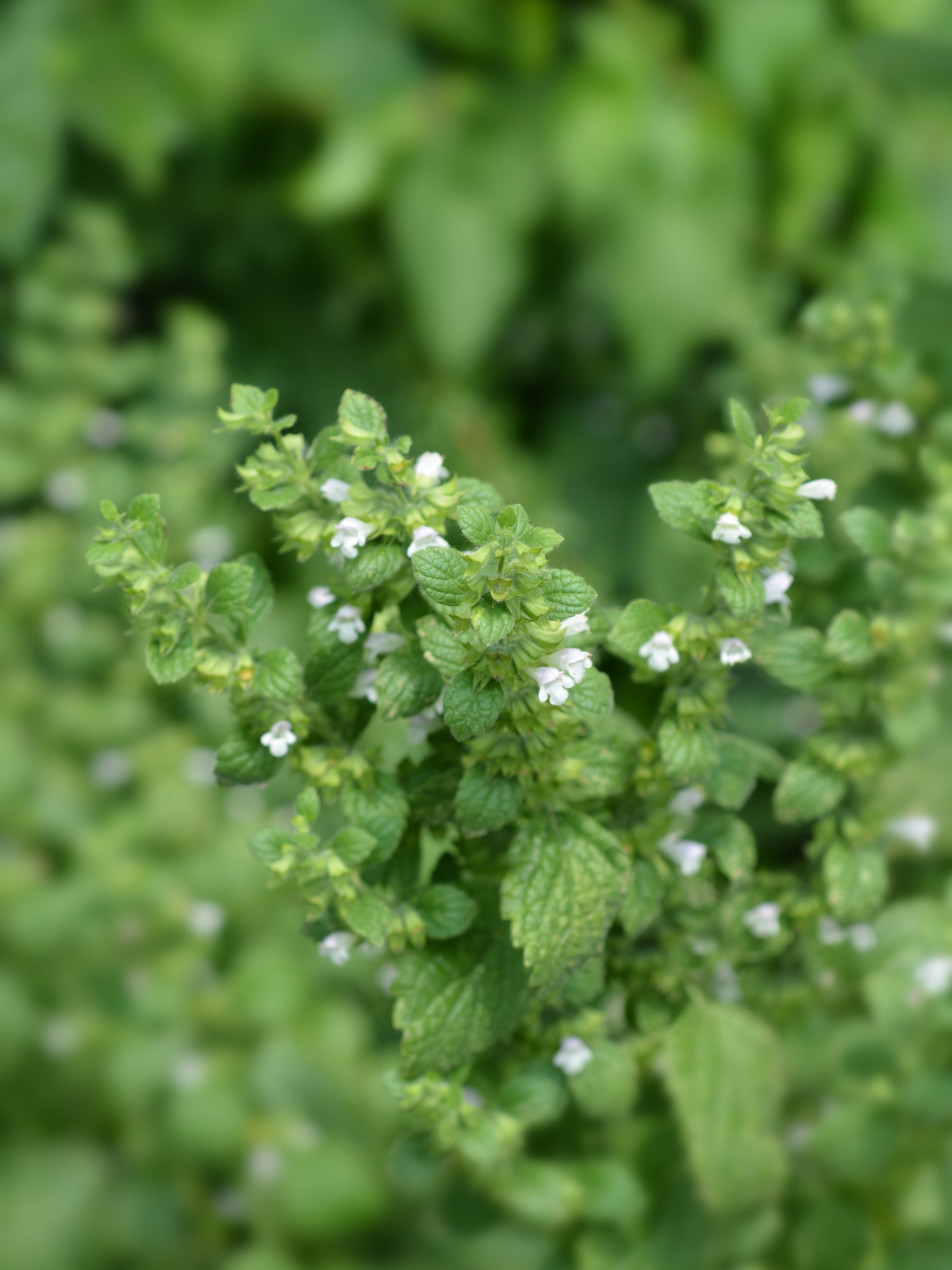
Marjoram (Origanum majorana)
Marjoram is a tender perennial herb that typically grows to about 1 to 2 feet tall. It prefers full sun and well-drained, slightly alkaline soil. Marjoram’s tiny, pink or white flowers attract bees and butterflies, making it an ideal herb for pollinator gardens.
Culinarily, marjoram is used in Mediterranean and European cuisine, particularly in soups, stews, and meat dishes. It has a sweet, mild flavor that pairs well with tomatoes, garlic, and olives.
Medically, marjoram has digestive and anti-inflammatory benefits. It can be used to relieve indigestion, bloating, and muscle pain. It’s also believed to help with anxiety and improve sleep.
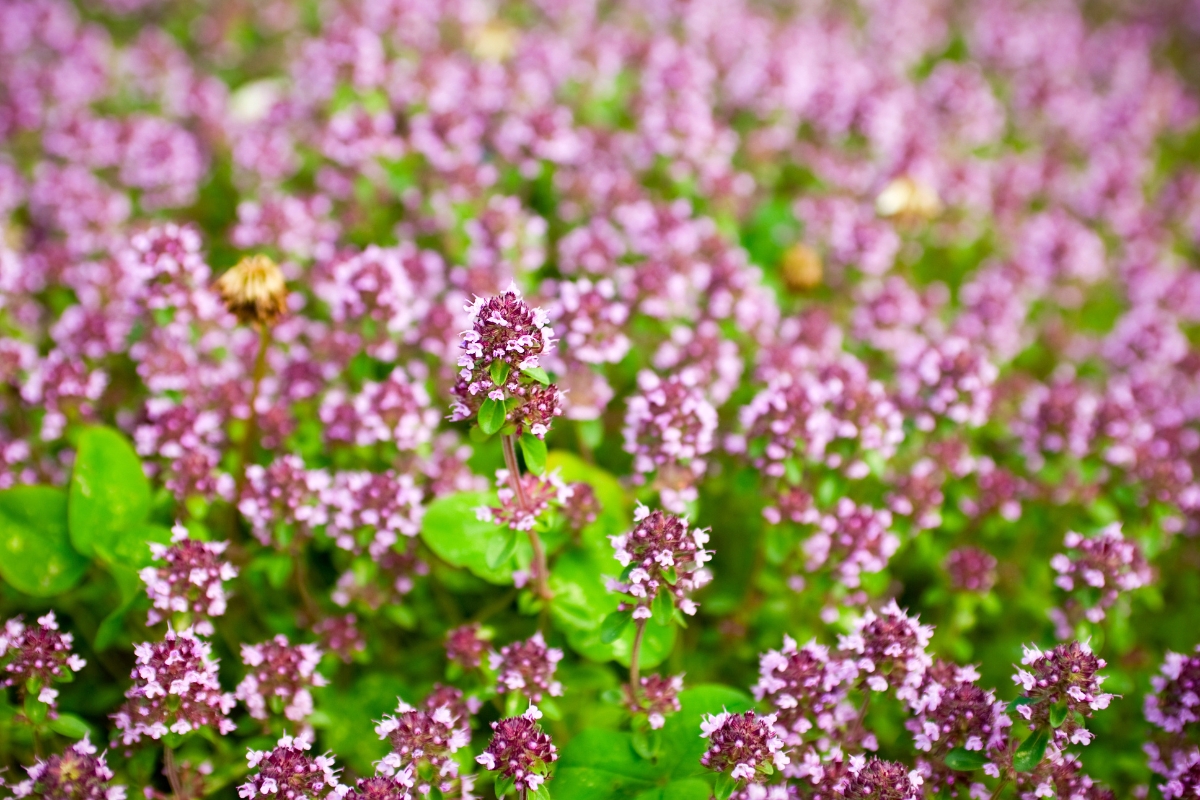
Mint (Mentha sp.)
Mint is a vigorous, fast-growing perennial herb that thrives in moist, well-drained soil and prefers partial to full sun. It can spread quickly, so it’s often best grown in containers to prevent it from taking over the garden. Mint plants can range in height from 1 to 2 feet, and their aromatic leaves are a favorite among pollinators, especially bees and butterflies.
Mint is a popular herb in the kitchen, used fresh or dried in a variety of dishes, from salads to desserts. It’s a classic addition to beverages like tea, lemonade, and mojitos. Mint can also be infused in oils for topical applications, or used in pest-repelling sachets to deter insects in the garden. The refreshing aroma and taste make it a delightful herb to have around, both for its culinary versatility and its ability to attract beneficial pollinators.
Medicinally, Mint is widely known for its soothing digestive properties. It is often used to relieve nausea, indigestion, and bloating. Peppermint, a variety of mint, is particularly well-regarded for its cooling and calming effects on the body. Mint also has anti-inflammatory and antimicrobial properties, which makes it effective in treating headaches, sinus congestion, and muscle pain.
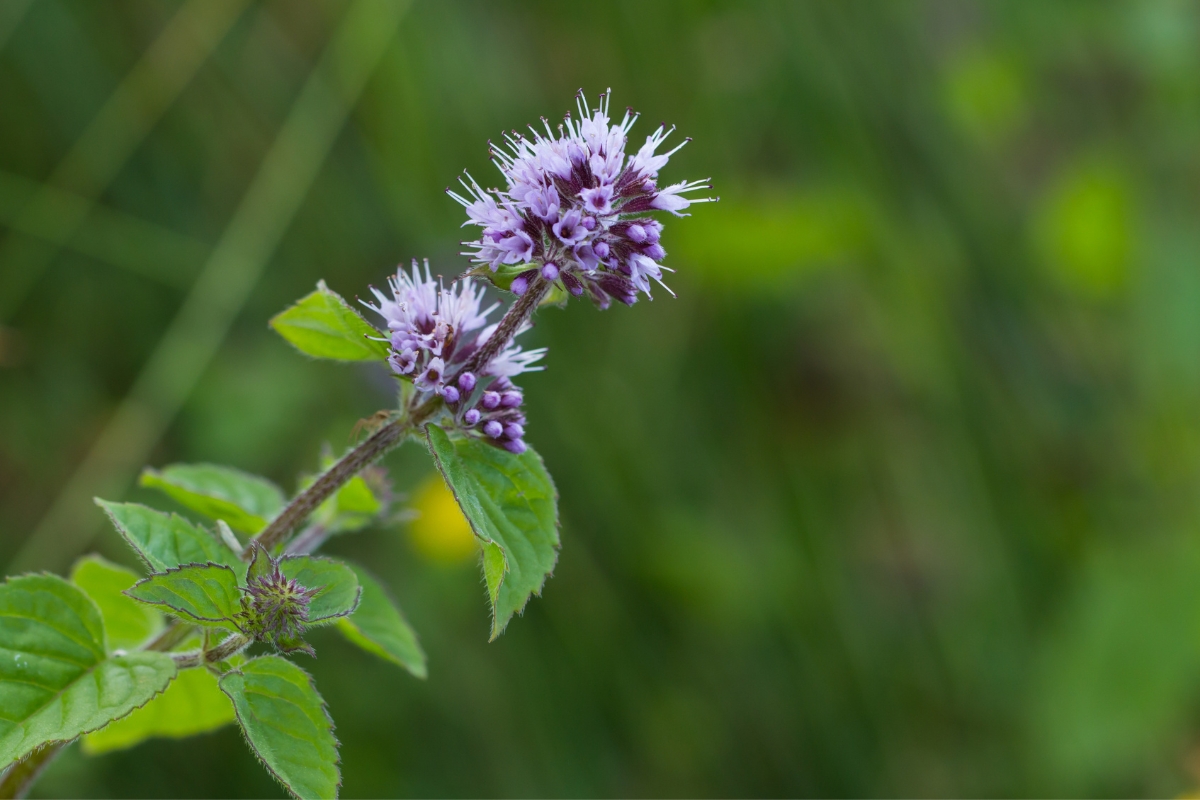
Oregano (Origanum vulgare)
Oregano is a hardy perennial herb that grows up to 18 inches tall. It thrives in full sun and well-drained, slightly alkaline soil. Oregano’s small purple or pink flowers are a magnet for bees and butterflies, making it an excellent pollinator-friendly herb.
Culinarily, oregano is essential in Mediterranean, Italian, and Mexican cuisines. It’s used in sauces, salads, pizza, and grilled meats.
Medically, oregano is highly valued for its antibacterial, antiviral, and antioxidant properties. It’s commonly used in teas or oils to treat respiratory issues, colds, and digestive problems.
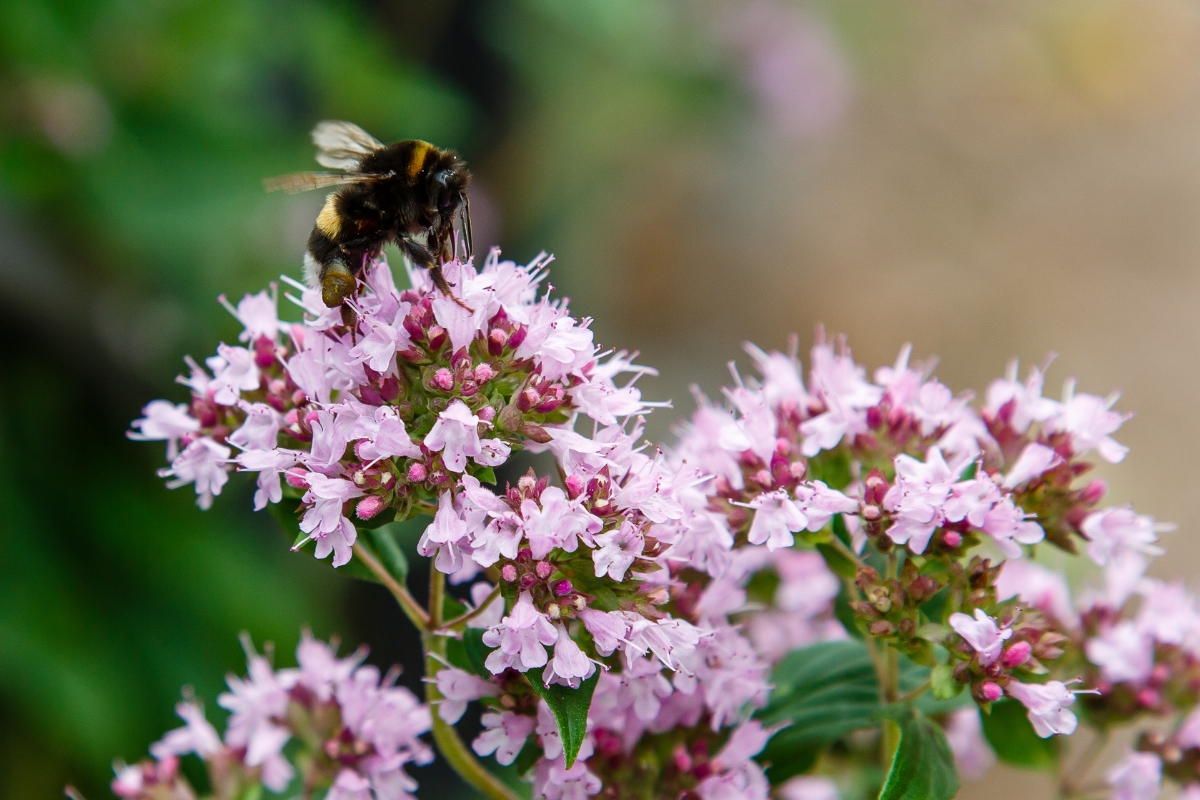
Rosemary (Rosmarinus officinalis)
Rosemary is a fragrant evergreen perennial herb that can grow up to 4 feet tall. It thrives in full sun and well-drained, slightly alkaline soil. Its small blue or purple flowers are loved by bees and other pollinators, making rosemary a valuable addition to any herb garden.
Culinarily, rosemary is a key ingredient in Mediterranean cuisine. It pairs wonderfully with roasted meats, vegetables, and potatoes, and is also used to flavor breads, oils, and sauces.
Medically, rosemary is known for its memory-boosting properties and its ability to improve circulation. It also has anti-inflammatory, antimicrobial, and pain-relieving benefits.
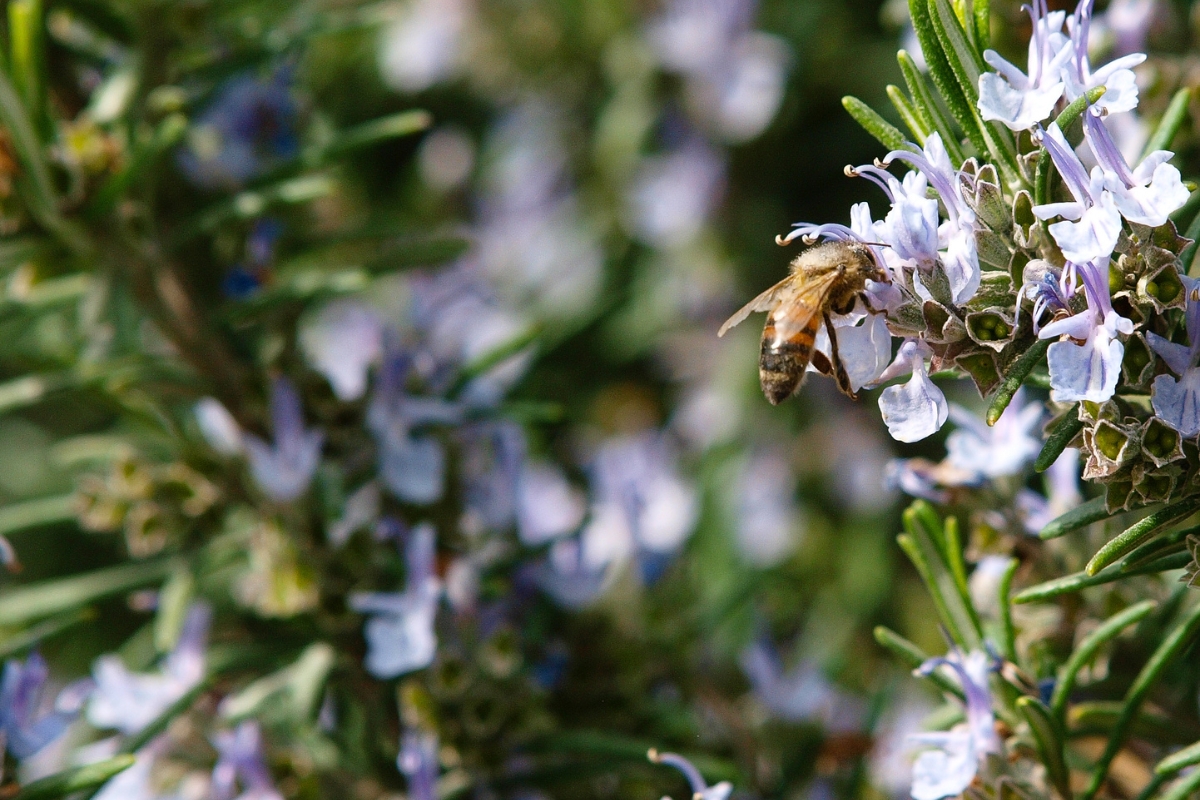
Sage (Salvia officinalis)
Sage is a woody perennial herb that grows up to 2 feet tall. It prefers full sun and well-drained soil and can tolerate a variety of conditions. Sage’s purple or blue flowers attract bees, butterflies, and hummingbirds.
Culinarily, sage is used in savory dishes such as stuffing, sausages, and roasted meats. Its earthy flavor also works well in soups, sauces, and teas.
Medically, sage has a wide range of uses, including as an anti-inflammatory, antimicrobial, and antioxidant. It is often used to soothe sore throats, improve memory, and relieve digestive issues.
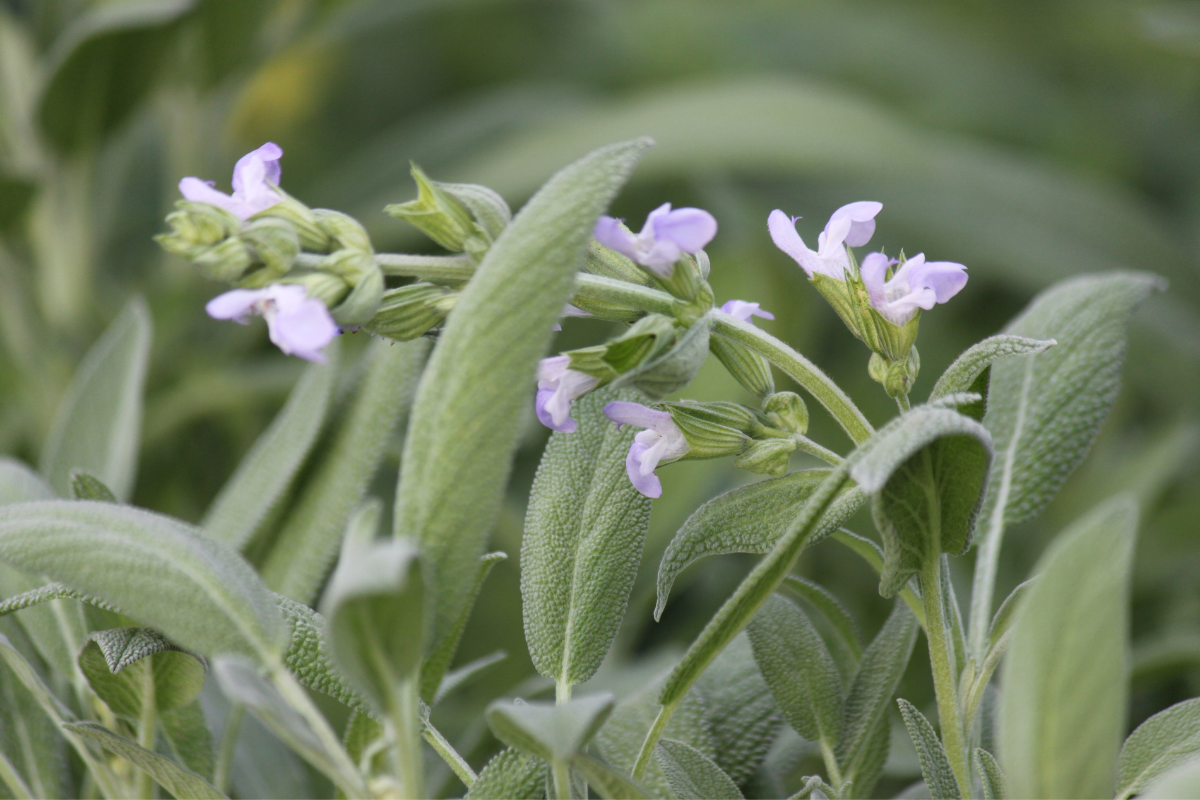
Tarragon (Artemisia dracunculus)
Tarragon is a perennial herb that grows up to 3 feet tall. It prefers full sun and well-drained, fertile soil. Its small, greenish-yellow flowers are attractive to bees and other pollinators.
Culinarily, tarragon is often used in French cuisine, especially in sauces like béarnaise. It pairs beautifully with chicken, fish, and vegetables.
Medically, tarragon is known for its digestive benefits, including reducing appetite and relieving indigestion. It also has anti-inflammatory and antioxidant effects.
Thyme (Thymus vulgaris)
Thyme is a low-growing perennial herb that reaches about 6 to 12 inches tall. It thrives in full sun and well-drained soil and produces small, aromatic flowers that attract bees and butterflies. Thyme’s hardy nature makes it an easy herb to grow in a variety of climates.
Culinarily, thyme is widely used in soups, stews, meats, and Mediterranean cuisine. Its subtle, earthy flavor enhances both savory and sweet dishes.
Medically, thyme is known for its antimicrobial and antioxidant properties. It is often used to support respiratory health, ease coughs, and improve digestion.

Winter Savory (Satureja montana)
Winter Savory is a perennial herb that grows up to 18 inches tall. It thrives in full sun and well-drained soil. Its small, white or pink flowers attract bees and other pollinators.
Culinarily, Winter Savory is used in a variety of savory dishes, particularly those involving beans, sausages, and meats. It has a peppery, slightly spicy flavor.
Medically, Winter Savory has digestive and anti-inflammatory properties. It’s commonly used to treat indigestion and support overall gastrointestinal health.
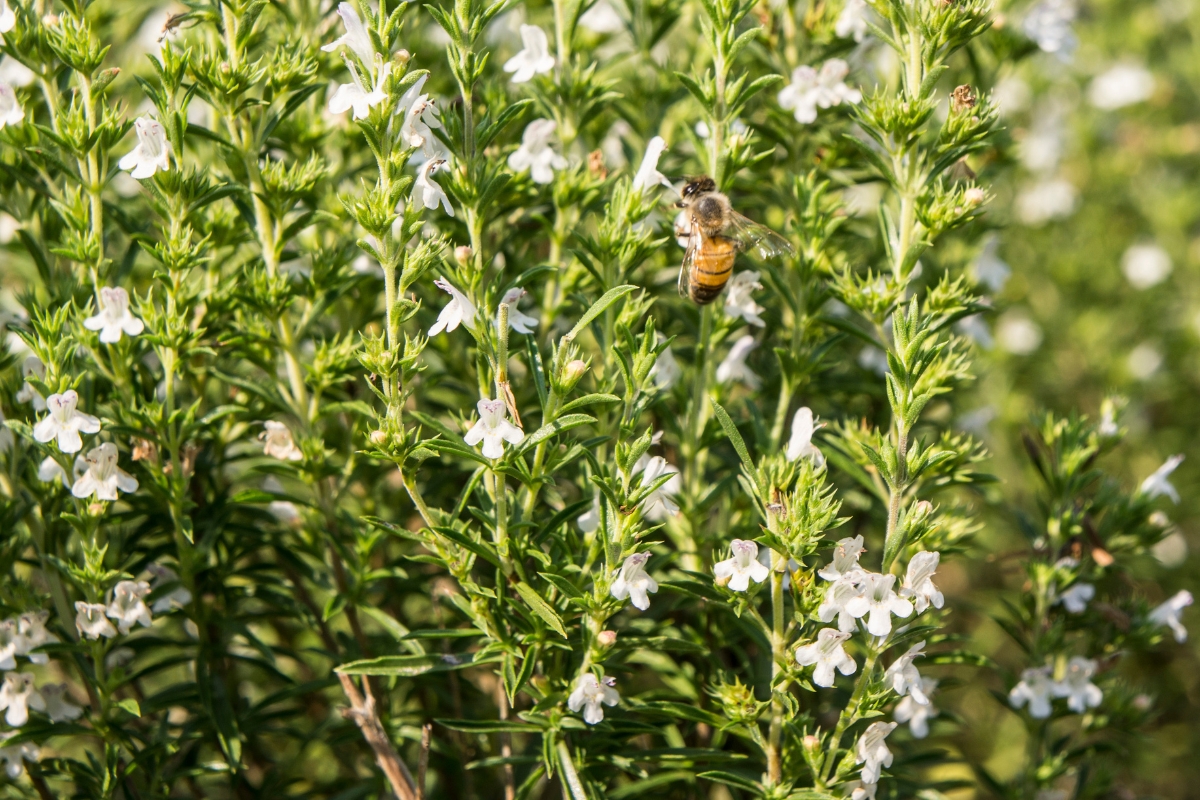
By adding these culinary herbs to your garden, you’ll not only enhance your kitchen with fresh flavors but also provide essential resources for pollinators, contributing to a healthier, more biodiverse environment.
Herb Gardening Inspiration
Looking for more herb gardening ideas?
